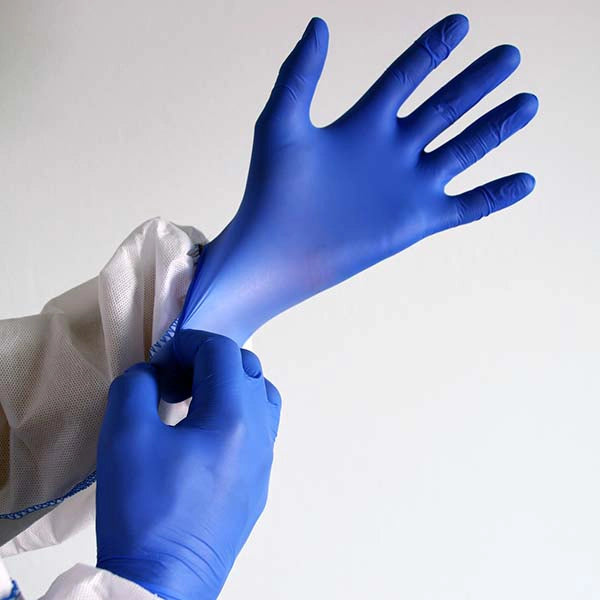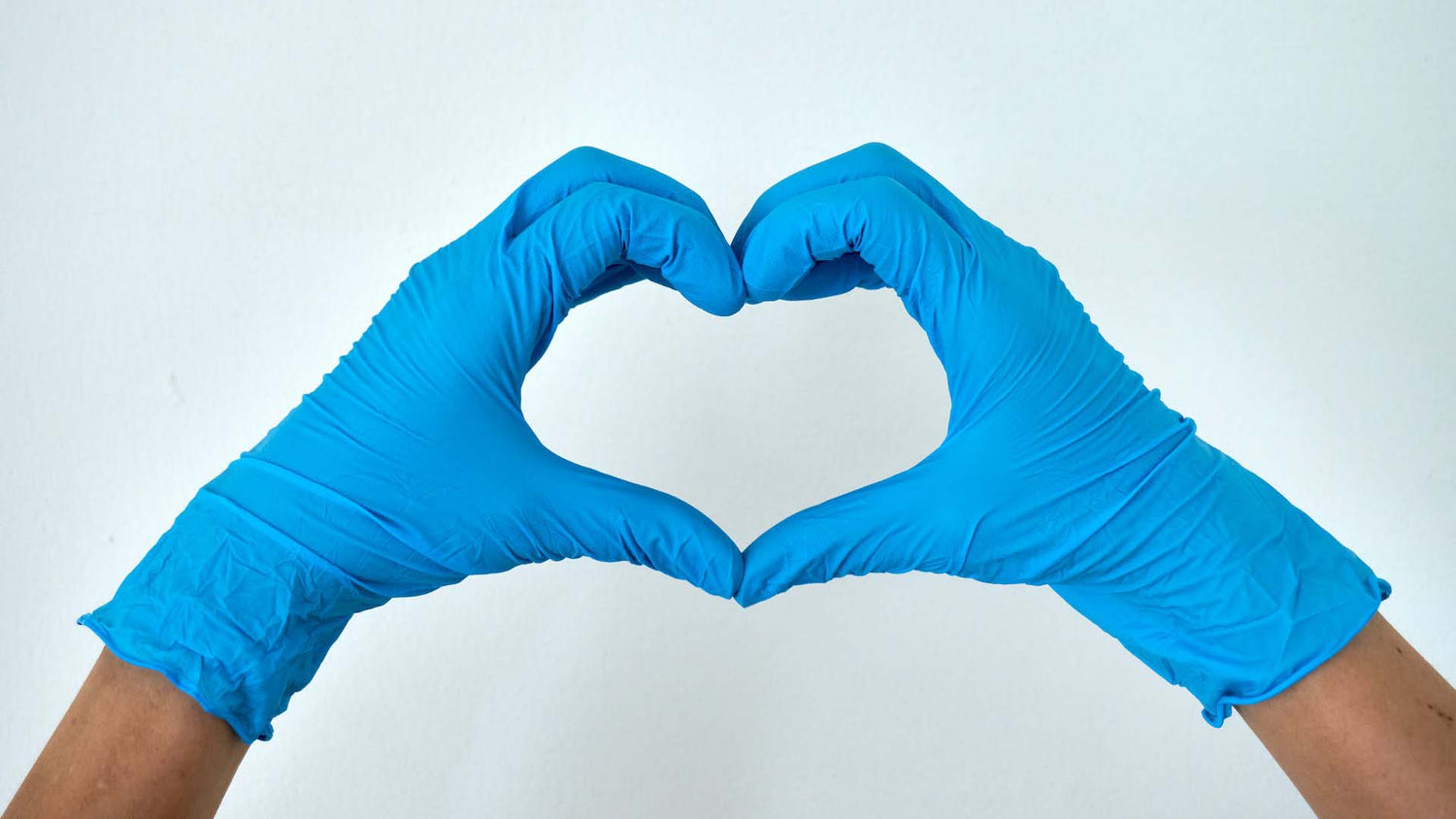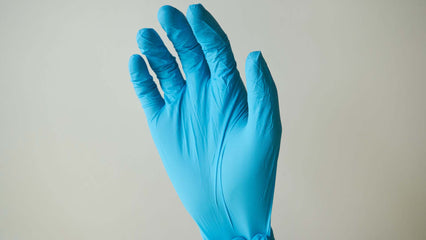If you’ve used nitrile gloves, you’re in good company: they’re some of the most popular disposable gloves on the market in a wide variety of industries.
If you’ve also got no idea what the heck nitrile gloves are made from, you’re also in good company: they haven’t been on the market all that long compared to latex gloves, not to mention most of us aren’t chemists.
We’re here to help clear things up. With over 30 years in the business, we’ve found that when it comes to gloves, how it’s made makes a world of difference in the final product. That means it’s important to shop smart.
In this article, we’ll take a look at what goes into making the synthetic rubber at the heart of nitrile gloves, how the gloves themselves are manufactured, and what kind of testing nitrile gloves go through to make sure they’re ready to use.
At the end of the article, you might not be whipping up a batch of nitrile gloves in your basement (trust us, you don’t want to try this at home), but you’ll have a basic understanding of the process that can help you make an informed decision as you shop.
At a glance:
Nitrile Gloves Materials
First of all, it helps to understand what nitrile gloves are actually made from.
Nitrile, also called nitrile butadiene rubber, is a copolymer of butadiene and acrylonitrile. A copolymer is simply a polymer made up of two or more monomers.
To put it in simpler terms, Nitrile is a combination of those two substances.
That combination means nitrile has the benefits of both butadiene and acrylonitrile. Butadiene provides nitrile’s famed flexibility and puncture resistance, while acrylonitrile enhances chemical resistance.
Since nitrile is a completely synthetic material, there are no natural proteins involved that can trigger a reaction. That means nitrile gloves are an excellent choice for people who suffer from a latex allergy or skin sensitivities.
Nitrile Gloves Manufacturing Process
Aside from the chemical composition, nitrile gloves are made using a similar process to latex gloves and others. Here’s how it works:
Producing the Material
First things first: to make a nitrile glove, you need to make nitrile. This part of the process is unique to nitrile gloves, because chemists have to synthesize the specific material — in this case, molecularly bonding butadiene and acrylonitrile monomers.
To do this, they essentially let the chemicals react with each other in water with catalysts and emulsifiers for about 5 to 12 hours. Once the reaction has taken place, the nitrile butadiene rubber is run through a series of filters, stabilized with antioxidants, and then mixed with coagulating agents and washed to get the final result.
Depending on the manufacturer and what the nitrile’s going to be used for (there are other uses besides just gloves!), different proportions of acrylonitrile and butadiene can be added to the mixture. This means some nitrile can have more or less flexibility and strength than others.
Once the nitrile butadiene rubber is synthesized, the raw material goes to a factory for manufacturing nitrile gloves.
Producing Protective Gloves
The basic process begins with an aluminum or ceramic hand-shaped mold on a conveyor. The molds are dipped in hot water and bleach or chlorine and then dried, which gets rid of any lingering residue from previous batches.
Next, the molds are coated in a rubber stick, which means dipping them in calcium nitrate solution (to coagulate the rubber) and calcium carbonate (to keep the gloves from sticking to the molds). After the molds dry, they’re dipped into a tank of nitrile.
Once they’ve been dipped, the forms are heated to help dry the nitrile into the correct shape. They may also be exposed to chlorine (which would make them easier to take off) or coated with polymer (which lubricates them).
After coatings are added, the gloves are stripped from their molds. This is usually done by human workers, since nitrile is stickier than latex.
Testing Nitrile Gloves for Quality Control
At this point, the nitrile gloves are fully manufactured, but they don’t head to the shelves yet. First, they have to be inspected to make sure they’re ready for primetime.
Most nitrile gloves go through two main categories of tests: ones to ensure they meet regulatory requirements, and ones to ensure quality. The specific tests can vary a little bit depending on the manufacturer, the locale, and the application the gloves are intended for.
Regulatory Tests
The regulatory tests ensure that a glove is safe enough to warrant a medical rating (the highest safety rating a glove can achieve), while batch tests ensure quality aligned with standards set by the American Society for Testing and Materials (ASTM).
After regulatory testing, ratings are granted based on how many gloves fail the test. For example, if 1.5 out of 100 gloves fail, the glove batch is acceptable for use in medical applications. Industrial-grade glove batches can have 2.5 gloves per 100 fail.
Quality Tests
On the quality side, nitrile gloves are tested for their physical properties, which ensures their thickness, puncture resistance, and strength are adequate for protecting the hands from, well, physical hazards.
Chemical resistance tests also measure nitrile gloves’ resistance to hazardous materials or solvents they might be exposed to.
Other tests include sterility tests (which ensure the gloves are sterile), pinhole tests (which check for leakage of liquids and microscopic organisms), dimension tests (which check thickness), and aging tests (which check tensile and elongation performance over several hours).
Once a pair of nitrile gloves passes all of those tests, they’re good to head to a distribution facility to be packaged, sold, and used.
Nitrile Gloves Your Whole Team Can Trust
As you read this article, you might have noticed that while the process for making nitrile gloves is pretty standard, there are some key areas where differences in the manufacturing process can affect quality and safety.
Some gloves can be higher quality or be required to meet stricter regulatory requirements than others. If you want the best nitrile gloves, it’s important to make sure you’re getting your nitrile gloves from a reputable source.
That’s where we come in. We only sell the highest-quality nitrile gloves we can find that are tested to meet rigorous FDA and ASTM testing standards, and we sell them at affordable prices you’d be hard-pressed to beat elsewhere.
If you’re ready to find your new favorite pair of nitrile gloves, check out our selection today.




